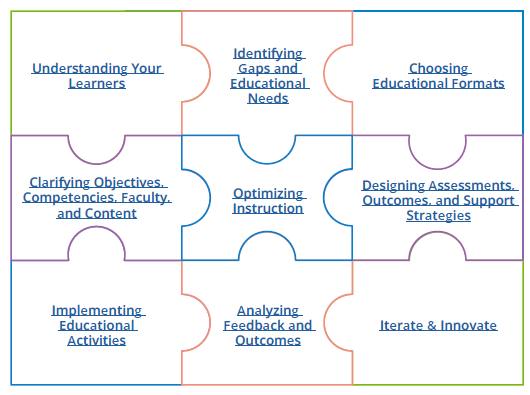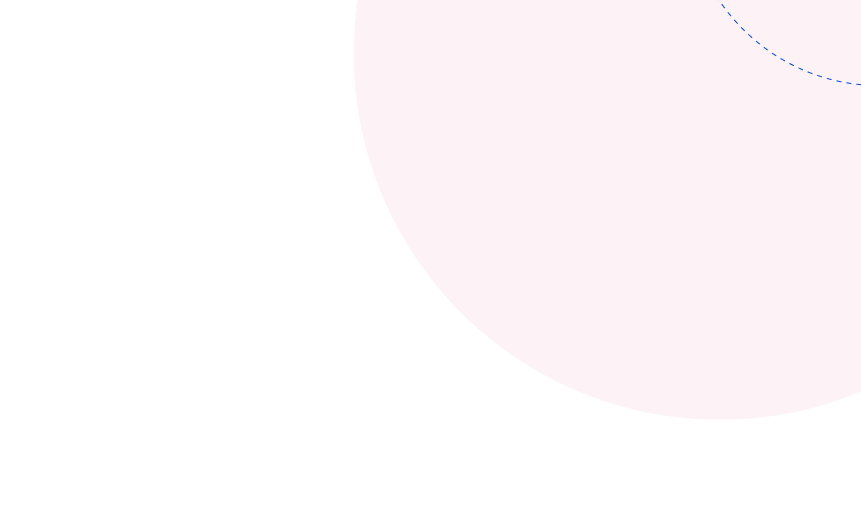In 2023 more than 30 Continuing Medical Education (CME) planners across organizations from the United States and abroad collaborated as a working group for the Accreditation Council for Continuing Medical Education (ACCME). All were curious about, or already engaged in, innovation and education.
The working group was led by Laura C. Hart, Director of Online Educational Initiatives for Penn MEHP Online, and Barbara Anderson, Director of the Office of Continuing Professional Development at University of Wisconsin-Madison School of Medicine and Public Health.
Together we crafted, and iterated upon, a “how might we” statement that became a charter for our working group: how might we leverage accredited continuing education to encourage addressing challenges and opportunities collaboratively?
The result—after months of work—was an innovation toolkit for the planning and implementation of continuing education programs. The ACCME published it in 2024 and made it available for download as a PDF. The toolkit’s goal is to help planners create novel, engaging, and effective activities to serve the needs of health care professionals. As the introduction states:
Educational planners that develop quality accredited continuing education (CE) have numerous opportunities to design creative and effective learning activities. This Innovation Toolkit encourages CE planners to draw on established methodologies from design thinking and user experience (UX) research to evolve—and evenly creatively disrupt—the ways in which educational planning creates novel and effective learning activities for the health care workforce.
What Innovation Can Accomplish
Our exploration of how innovation could apply to CE planning built upon the following understanding of what innovation can accomplish. Innovation:
-
Brings about change
In process, human behavior, technology, and / or policy. -
Provides methods and tools to facilitate change
Through identifying needs, reframing problems so that they are solvable, and providing templates for prototyping, piloting, and continuous improvement. -
Embraces iteration
Through evaluation and the pursuit of learning—not perfection; by acknowledging and embracing failure; by experimenting with ideas and considering how and whether they can scale. -
Requires collaboration
Building communities of trust where diverse opinions, drawn from diverse experience, can be expressed. One person or perspective is not enough to move beyond conventional thinking.
A Flexible Framework
The innovation toolkit provides a flexible framework, designed as a jigsaw puzzle. Planning effective CE activities is not a linear process, and the puzzle allows users to work on pieces in an order that best suits the learning activity and their own process.
Each puzzle piece is a project of its own, and a step toward the larger goal. For each, the working group has identified online innovation resources and provided exemplars that can serve as a model to get started.

For example, one piece is identifying gaps and educational needs. The toolkit helps users get started by prompting them with the question, “How can we best uncover professional practice gaps of our learners and their underlying educational needs?” And it suggests a number of approaches to find answers:
-
Contextual inquiry
Direct observation can uncover what clinicians don’t know and what they feel they need to know. -
5 whys
Listen to potential learners or subject matter experts and ask, “So what? What would be good about solving the problem?” The answer may lead to another way to meet the need. -
Signal-searching
Anticipate needs by scanning for signs of trends, needs, or solutions in other areas that may be applied to health care. -
Jobs to be done
Clayton Christensen’s well-known method gets to the heart of a need, in order to address the underlying issue.
In addition, it provides links to related articles, videos, and job aids from well-regarded sources to help users understand what each of these techniques are and how to use them.
The toolkit and its puzzle metaphor help users grasp the big picture:
-
Innovation occurs throughout the planning process, and we—and our frameworks—must be flexible to achieve impact.
-
Experimentation and iteration are keys to successful innovation.
-
Every innovator gets stuck, and having tools and techniques to scaffold creativity can spark novel and exciting—and sustainable—ideas throughout the continuum of accredited continuing education.
Building a Community of Practice
As an offshoot of this work, the University of Wisconsin–Madison Office of Continuing Professional Development is building a community of practice. We encourage people who download the Innovation Toolkit to share their successes, failures, questions, and discoveries with the community.
To join, complete this brief form, hosted by the University of Wisconsin-Madison’s Interprofessional Continuing Education Partnership.

